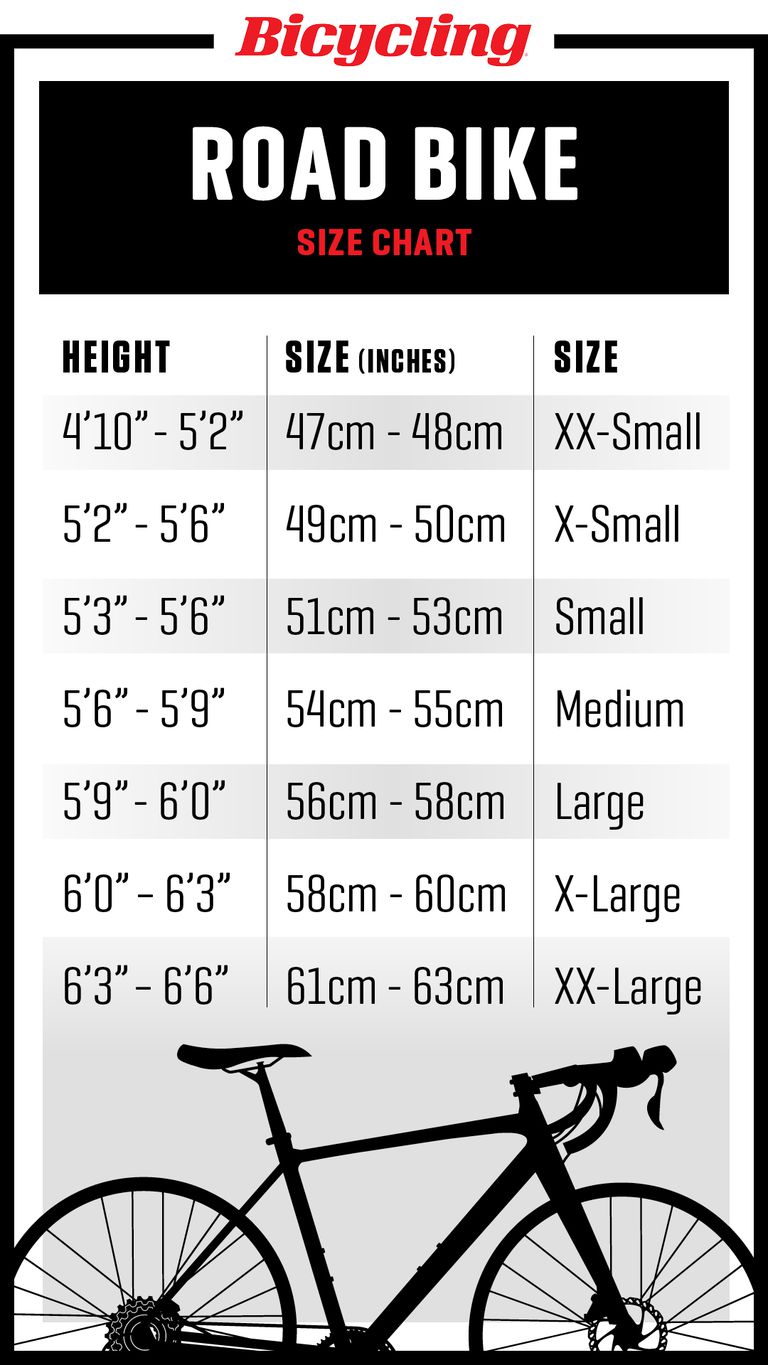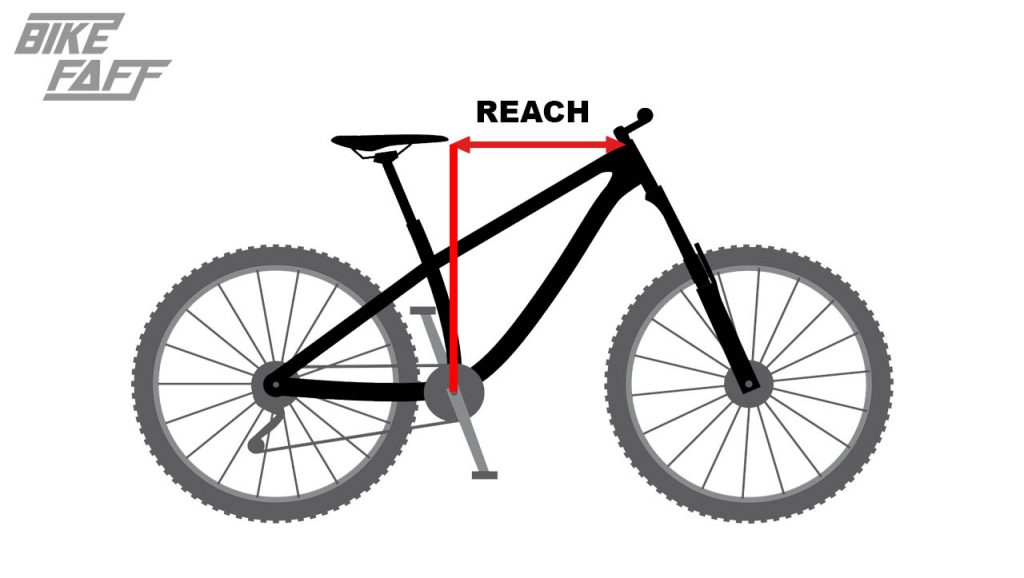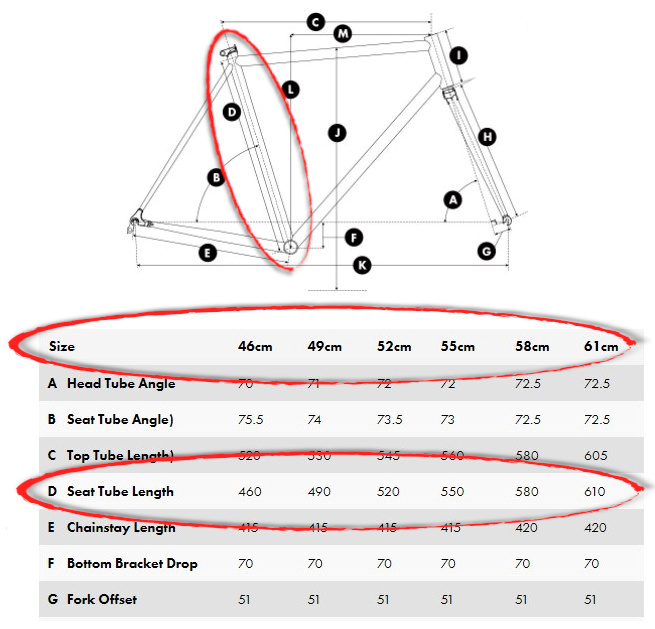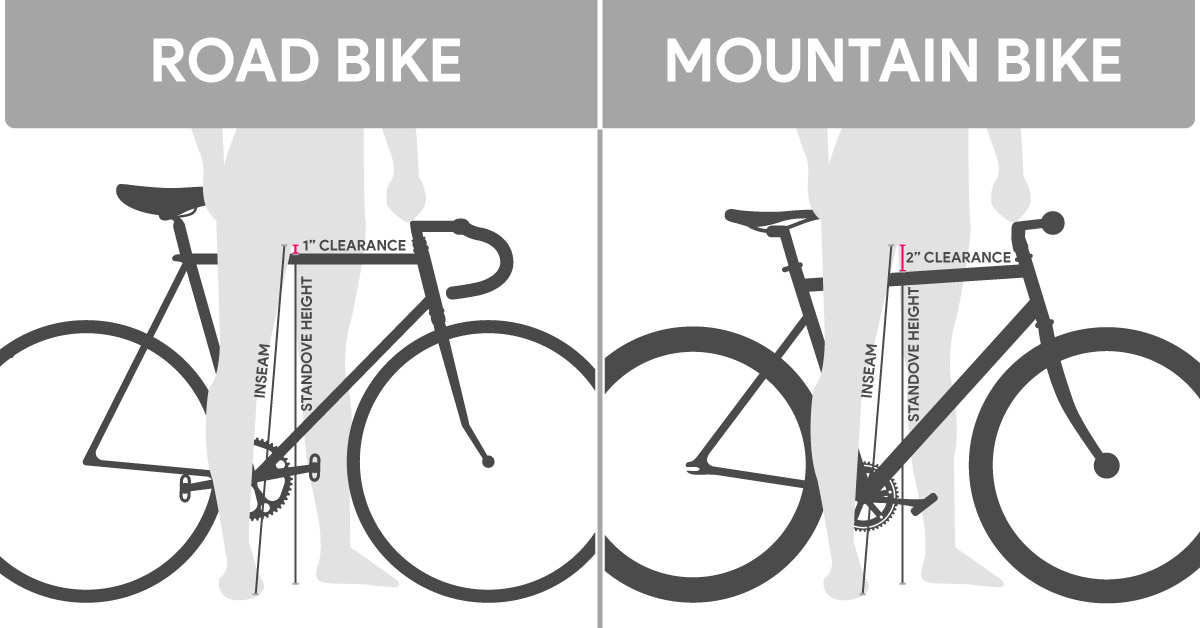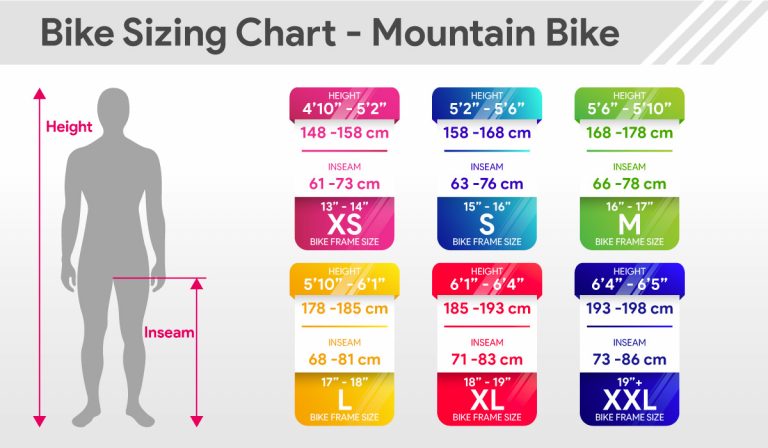Why Proper Bike Frame Sizing Matters for a Comfortable Ride
A well-fitting bike frame is essential for a comfortable and efficient ride. When a bike frame is properly sized, it can improve performance, reduce discomfort, and prevent injuries. A bike that is too small or too large can lead to a range of issues, including back and neck pain, numbness in the hands and feet, and decreased control over the bike.
Proper bike frame sizing is crucial for maintaining a comfortable riding position. When the frame is the right size, the rider can maintain a neutral spine, with the shoulders relaxed and the hands in a comfortable position on the handlebars. This allows for efficient pedaling and control over the bike, reducing the risk of fatigue and injury.
In addition to comfort, proper bike frame sizing can also improve performance. A well-fitting bike frame allows the rider to maintain a aerodynamic position, reducing air resistance and increasing speed. This is particularly important for competitive cyclists, who rely on every advantage to gain an edge over their competitors.
Furthermore, proper bike frame sizing can also prevent injuries. A bike that is too small or too large can put unnecessary strain on the rider’s body, leading to injuries such as tendonitis, bursitis, and even broken bones. By ensuring a proper fit, riders can reduce their risk of injury and enjoy a safer, more comfortable ride.
While it may seem obvious, proper bike frame sizing is often overlooked by riders. Many cyclists assume that a bike is a one-size-fits-all proposition, or that they can simply adjust the seat and handlebars to fit their body. However, this approach can lead to a range of problems, from discomfort and decreased performance to increased risk of injury.
Fortunately, finding the right bike frame size is easier than ever. With the help of a bike frame sizing chart, riders can quickly and easily determine the perfect size for their body. By considering factors such as height, inseam, and riding style, riders can find a bike that fits their needs and provides a comfortable, efficient ride.
Understanding Bike Frame Geometry: Key Components to Consider
Bike frame geometry plays a crucial role in determining the fit and feel of a bike. When it comes to bike frame sizing, understanding the key components of bike frame geometry is essential for finding the perfect fit. The top tube length, seat tube length, head tube angle, and standover height are all critical components that affect the fit and feel of a bike.
The top tube length is the horizontal distance between the head tube and the seat tube. A longer top tube length can provide a more comfortable riding position for taller riders, while a shorter top tube length can be more suitable for shorter riders. The seat tube length, on the other hand, is the vertical distance between the bottom bracket and the top of the seat tube. A longer seat tube length can provide more room for riders with longer legs, while a shorter seat tube length can be more suitable for riders with shorter legs.
The head tube angle is the angle between the head tube and the ground. A steeper head tube angle can provide more responsive handling, while a slacker head tube angle can provide more stability. The standover height is the vertical distance between the ground and the top of the top tube. A lower standover height can provide more clearance for riders with shorter legs, while a higher standover height can provide more room for riders with longer legs.
When considering bike frame geometry, it’s essential to think about how these components interact with each other. For example, a bike with a longer top tube length and a steeper head tube angle may be more suitable for a rider who prefers a more aggressive riding position. On the other hand, a bike with a shorter top tube length and a slacker head tube angle may be more suitable for a rider who prefers a more relaxed riding position.
Using a bike frame sizing chart can help riders determine the perfect fit based on their body measurements and riding style. By considering the key components of bike frame geometry, riders can find a bike that provides a comfortable and efficient ride. Whether you’re a seasoned cyclist or just starting out, understanding bike frame geometry is essential for finding the perfect fit and enjoying a lifetime of comfortable and enjoyable riding.
In addition to bike frame geometry, other factors such as riding position and terrain should also be considered when sizing a bike frame. For example, a rider who prefers a more upright riding position may require a bike with a shorter top tube length and a more relaxed head tube angle. On the other hand, a rider who prefers a more aggressive riding position may require a bike with a longer top tube length and a steeper head tube angle.
By considering these factors and using a bike frame sizing chart, riders can find the perfect fit and enjoy a comfortable and efficient ride. Whether you’re riding on the road, trail, or commute, a well-fitting bike frame is essential for a enjoyable and safe ride.
How to Measure Yourself for a Bike Frame: A Step-by-Step Guide
Measuring yourself for a bike frame is a crucial step in finding the perfect fit. By taking accurate body measurements and using online sizing tools, you can ensure a comfortable and efficient ride. Here’s a step-by-step guide on how to measure yourself for a bike frame:
Step 1: Measure Your Height
Stand against a wall with your feet shoulder-width apart and your back straight. Measure the distance from the floor to the top of your head. This will give you your overall height, which is essential for determining your bike frame size.
Step 2: Measure Your Inseam
Stand against a wall with your feet shoulder-width apart and your back straight. Measure the distance from the floor to the crotch seam of your pants. This will give you your inseam, which is critical for determining your bike frame size.
Step 3: Measure Your Arm Length
Stand with your arms at your sides and your palms facing forward. Measure the distance from the center of your back to the tip of your middle finger. This will give you your arm length, which is essential for determining your bike frame size.
Step 4: Use Online Sizing Tools
Once you have taken your body measurements, you can use online sizing tools to determine your bike frame size. Most bike manufacturers provide sizing charts on their websites, which can help you determine your ideal bike frame size based on your body measurements.
Step 5: Consider Your Riding Style
When measuring yourself for a bike frame, it’s essential to consider your riding style. If you’re a road biker, you may prefer a more aggressive riding position, which requires a smaller bike frame size. On the other hand, if you’re a mountain biker, you may prefer a more upright riding position, which requires a larger bike frame size.
By following these steps and using online sizing tools, you can ensure a comfortable and efficient ride. Remember to always consult a bike frame sizing chart to determine your ideal bike frame size based on your body measurements and riding style.
Using a bike frame sizing chart can help you find the perfect fit and avoid common mistakes when sizing a bike frame. By considering your body measurements and riding style, you can ensure a comfortable and efficient ride. Whether you’re a seasoned cyclist or just starting out, taking the time to measure yourself for a bike frame is essential for finding the perfect fit.
Using a Bike Frame Sizing Chart: Tips and Tricks
A bike frame sizing chart is a valuable tool for finding the perfect fit. By using a sizing chart, you can determine your ideal bike frame size based on your body measurements and riding style. Here are some tips and tricks for using a bike frame sizing chart:
Understand the Different Types of Sizing Charts
There are several types of bike frame sizing charts available, including those from popular bike manufacturers like Trek and Specialized. Each chart may have slightly different measurements and recommendations, so it’s essential to understand the specific chart you’re using.
Measure Yourself Accurately
To get the most out of a bike frame sizing chart, you need to take accurate body measurements. Make sure to measure your height, inseam, and arm length carefully, and use these measurements to determine your ideal bike frame size.
Consider Your Riding Style
Your riding style can also affect your bike frame size. For example, if you’re a road biker, you may prefer a more aggressive riding position, which requires a smaller bike frame size. On the other hand, if you’re a mountain biker, you may prefer a more upright riding position, which requires a larger bike frame size.
Don’t Rely Too Heavily on Online Sizing Tools
While online sizing tools can be helpful, they shouldn’t be relied upon too heavily. These tools can provide a general idea of your bike frame size, but they may not take into account your specific body measurements and riding style.
Consult Multiple Sizing Charts
To ensure you’re getting the right bike frame size, consult multiple sizing charts. This will give you a more accurate idea of your ideal bike frame size and help you avoid common mistakes.
By following these tips and tricks, you can use a bike frame sizing chart to find the perfect fit. Remember to always consult multiple sizing charts and consider your riding style to ensure a comfortable and efficient ride.
A bike frame sizing chart is a valuable tool for finding the perfect fit. By understanding the different types of sizing charts, measuring yourself accurately, and considering your riding style, you can determine your ideal bike frame size and enjoy a comfortable and efficient ride.
Real-World Examples: How to Choose the Right Bike Frame Size for Your Riding Style
Choosing the right bike frame size depends on various factors, including your riding style, terrain, and personal preferences. Here are some real-world examples of how to choose the right bike frame size for different riding styles:
Road Biking
For road biking, a smaller bike frame size is often preferred to achieve a more aggressive riding position. This allows for better aerodynamics and improved performance. However, if you’re a taller rider, you may prefer a larger bike frame size to accommodate your longer legs and arms.
Mountain Biking
For mountain biking, a larger bike frame size is often preferred to provide more stability and control on rough terrain. This allows for better maneuverability and improved performance on technical trails. However, if you’re a shorter rider, you may prefer a smaller bike frame size to accommodate your shorter legs and arms.
Commuting
For commuting, a bike frame size that provides a comfortable and upright riding position is often preferred. This allows for better visibility and improved control in heavy traffic. A medium-sized bike frame is often a good choice for commuting, as it provides a balance between comfort and performance.
Consider Your Riding Position
Your riding position is also an important factor to consider when choosing a bike frame size. If you prefer a more aggressive riding position, a smaller bike frame size may be preferred. However, if you prefer a more upright riding position, a larger bike frame size may be preferred.
Consider Your Terrain
The terrain you ride on is also an important factor to consider when choosing a bike frame size. If you ride on rough terrain, a larger bike frame size may be preferred to provide more stability and control. However, if you ride on smooth terrain, a smaller bike frame size may be preferred to achieve better performance.
By considering these factors and using a bike frame sizing chart, you can choose the right bike frame size for your riding style and enjoy a comfortable and efficient ride.
Common Mistakes to Avoid When Sizing a Bike Frame
When sizing a bike frame, there are several common mistakes to avoid. By being aware of these mistakes, you can ensure a proper fit and avoid discomfort, injury, or poor performance.
Relying Too Heavily on Online Sizing Tools
While online sizing tools can be helpful, they should not be relied upon too heavily. These tools can provide a general idea of your bike frame size, but they may not take into account your specific body measurements and riding style.
Neglecting to Consider Personal Preferences
Personal preferences play a significant role in determining the perfect bike frame size. Neglecting to consider your personal preferences can lead to a bike that is uncomfortable or difficult to ride.
Not Considering Riding Style
Riding style is another important factor to consider when sizing a bike frame. Different riding styles require different bike frame sizes, and neglecting to consider your riding style can lead to a poor fit.
Not Measuring Yourself Accurately
Accurate measurements are essential for determining the perfect bike frame size. Not measuring yourself accurately can lead to a bike that is too small or too large, resulting in discomfort, injury, or poor performance.
Not Considering Terrain
Terrain is another important factor to consider when sizing a bike frame. Different terrains require different bike frame sizes, and neglecting to consider your terrain can lead to a poor fit.
By avoiding these common mistakes, you can ensure a proper fit and enjoy a comfortable and efficient ride. Remember to always consider your body measurements, riding style, personal preferences, and terrain when sizing a bike frame.
Using a bike frame sizing chart can also help you avoid these common mistakes. By providing a comprehensive guide to bike frame sizing, these charts can help you determine the perfect bike frame size for your needs.
Getting a Professional Bike Fit: Is it Worth the Investment?
A professional bike fit can be a valuable investment for serious cyclists. By providing a customized fit, a professional bike fitter can help improve performance, increase comfort, and reduce the risk of injury.
Benefits of a Professional Bike Fit
A professional bike fit can provide several benefits, including improved performance, increased comfort, and reduced risk of injury. By optimizing the fit of the bike to the rider’s body, a professional bike fitter can help improve pedaling efficiency, reduce fatigue, and enhance overall performance.
Costs and Benefits of a Professional Bike Fit
The cost of a professional bike fit can vary depending on the location, experience, and qualifications of the fitter. On average, a professional bike fit can cost anywhere from $100 to $300. While this may seem like a significant investment, the benefits of a professional bike fit can far outweigh the costs.
Is a Professional Bike Fit Worth the Investment?
Whether or not a professional bike fit is worth the investment depends on several factors, including the rider’s level of experience, the type of riding they do, and their personal preferences. For serious cyclists who ride regularly, a professional bike fit can be a valuable investment. However, for casual riders who only ride occasionally, a professional bike fit may not be necessary.
Alternatives to a Professional Bike Fit
For riders who cannot afford or do not want to invest in a professional bike fit, there are several alternatives available. Online bike fit calculators and sizing charts can provide a general idea of the correct bike size and fit. Additionally, many bike shops offer free or low-cost bike fits as part of the purchase of a new bike.
Conclusion
A professional bike fit can be a valuable investment for serious cyclists. By providing a customized fit, a professional bike fitter can help improve performance, increase comfort, and reduce the risk of injury. While the cost of a professional bike fit may seem significant, the benefits can far outweigh the costs.
Conclusion: Finding Your Perfect Bike Frame Size for a Lifetime of Comfortable Riding
Proper bike frame sizing is crucial for a comfortable and efficient ride. By understanding the key components of bike frame geometry, taking accurate body measurements, and using a bike frame sizing chart, you can find the perfect fit for your riding style.
Remember to consider factors like riding position, terrain, and personal preferences when sizing a bike frame. Avoid common mistakes like relying too heavily on online sizing tools and neglecting to consider personal preferences.
Investing in a professional bike fit can also be beneficial, as it can provide improved performance, increased comfort, and reduced risk of injury. However, if you cannot afford or do not want to invest in a professional bike fit, there are several alternatives available, including online bike fit calculators and sizing charts.
By taking the time to get it right, you can enjoy a lifetime of comfortable and enjoyable riding. Don’t settle for a bike that doesn’t fit properly – take the time to find your perfect fit and experience the difference for yourself.
Whether you’re a seasoned cyclist or just starting out, proper bike frame sizing is essential for a comfortable and efficient ride. By following the tips and guidelines outlined in this article, you can find the perfect fit and enjoy a lifetime of comfortable and enjoyable riding.
So why wait? Start your journey to finding your perfect bike frame size today and experience the difference for yourself. With the right fit, you’ll be able to ride with confidence and comfort, and enjoy the many benefits that cycling has to offer.


